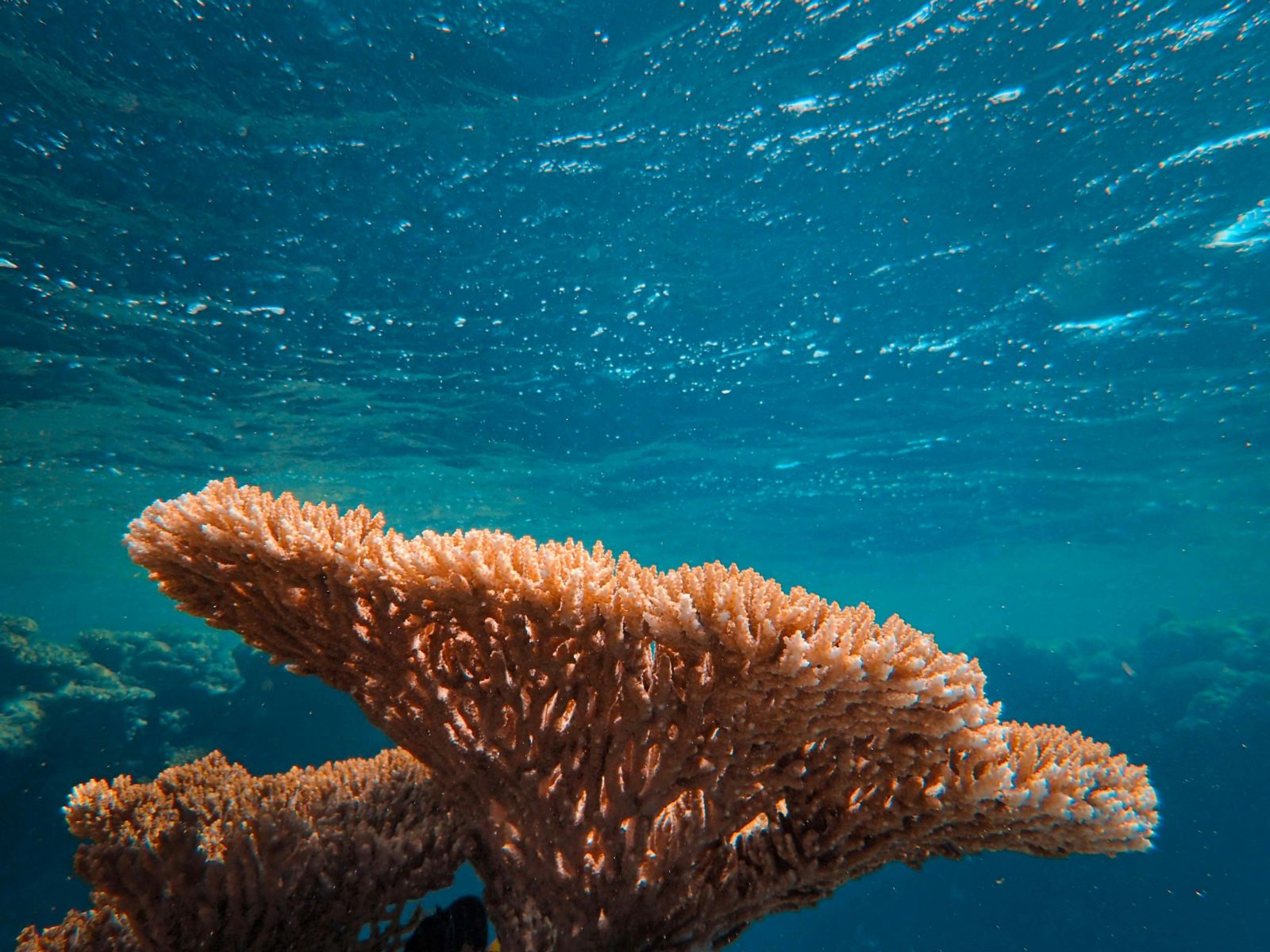When Hurricanes María and Irma struck Puerto Rico in 2017, they fractured communities. Lives were tragically lost, families displaced, livelihoods disrupted, and neighborhoods reduced to rubble. Less visible were the communities beneath the waves, but they were devastated as well: coral reef communities were violently fragmented by the storm swells and inundated by debris. As on land, some areas have still not recovered.
During recent fieldwork in Puerto Rico, students in the Earth Rights Research and Action (TERRA) Clinic at NYU Law met with experts to learn about the impacts of climate change on coral reefs. Equipped with a better understanding of the fundamental role coral reefs play in the lives of human and non-human coastal communities, a simple question arose: why doesn’t the human rights community view keystone species, such as reef-building corals on coral reefs, as human rights defenders? Relatedly, might we be moved to better protect and restore coral reefs if we referred to them in ways that more accurately reflect the role they already play in our human lives?
Coral reefs as human rights defenders
Human rights defenders work to defend and promote fundamental rights and freedoms worldwide. In recent years, they have faced growing threats, including harassment and violence, which have inspired international efforts to safeguard them. Keystone species like coral reefs may not document violations or organize protests, but they, too, defend human rights in their own way.
Coral reefs occupy less than 1% of the ocean floor but sustain more than 25% of marine life. They are essential for the food security of many fishing communities. They anchor local identities and support cultural practices intertwined with the ocean. They also provide a physical barrier that absorbs and reduces the energy of incoming waves, thereby protecting coasts from storms, erosion, and flooding. Without coral reefs, beaches in the Caribbean, and the waterfront economies that so many livelihoods rely on, would cease to exist. In short, they are essential to preserving the human rights of those who live in many coastal communities, whether we are speaking of the right to life, to an adequate standard of living (which includes adequate food and housing), to health, to cultural heritage, or to a clean, healthy, and sustainable environment.
The threat of extreme weather and climate change
In the aftermath of the 2017 hurricane season, Dr. Edwin Hernandez-Delgado and Samuel Suleiman-Ramos were called in to help restore Puerto Rico’s coral reefs. They run the nonprofit Sociedad Ambiente Marino (SAM), which promotes coral reef and seagrass restoration, conducts conservation and management-oriented research, and educates the public on the critical importance of conserving and restoring marine resources. In 2003, SAM established the first sustained coral restoration project in the Caribbean region. Although nearly 100,000 restored corals were lost during the 2017 storms, SAM remained undeterred and, with an army of volunteers, successfully restored over 50,000 corals. Yet, their efforts face renewed challenges, as extreme heat events in recent years have rendered the struggle to preserve these fragile marine habitats even more difficult. Ultimately, most of SAM’s efforts were lost once again due to mass coral bleaching and mortality in 2023 and 2024.
2024 marked the end of the hottest decade ever recorded, with global temperatures pushing human systems to their limits. The same holds true for coral reefs, which are the ecosystems most sensitive to high temperatures. Global warming is causing recurrent mass bleaching and mortality in reefs worldwide, not just in Puerto Rico, where the 2023 and 2024 extreme heat events resulted in the loss of millions of reef-building corals. This loss included over 99% of remnant populations of Elkhorn coral (Acropora palmata), Staghorn coral (Acropora cervicornis), and Pillar coral (Dendrogyra cylindrus), which are all listed as endangered species. Numerous other species have also suffered significant declines, adversely affecting reefs’ ecological functions.
What does the future hold?
At our current level of warming, coral reefs worldwide are projected to decline by 70–90% by 2050. Recent research suggests that restoration cannot be scaled up globally to prevent these losses. But while we can’t stop the clock, we can still buy ourselves time. Local restoration efforts like those led by SAM offer a critical lifeline. There are still viable options to strengthen reef communities against future marine heatwaves and storms, or at least ensure that enough climate-resilient coral is preserved to maintain their ecological functions and serve as the basis for an eventual resurgence. Novel strategies are vital for identifying surviving corals, cultivating climate-resilient coral species, and ensuring genetic diversity through cross-transplanting efforts and inter-island transfers.
If we view coral reefs as human rights defenders, then we might begin to understand that their survival is not just an ecological concern—it is a human rights issue. Defenders on the frontlines need protection. Supporting local restoration work is one way to do that. Another is to limit the global greenhouse gas emissions driving the climate crisis in the first place. We owe it to the reefs—and to the communities they protect—to take action and safeguard the small percentage of reef communities likely to survive while we still have time.

